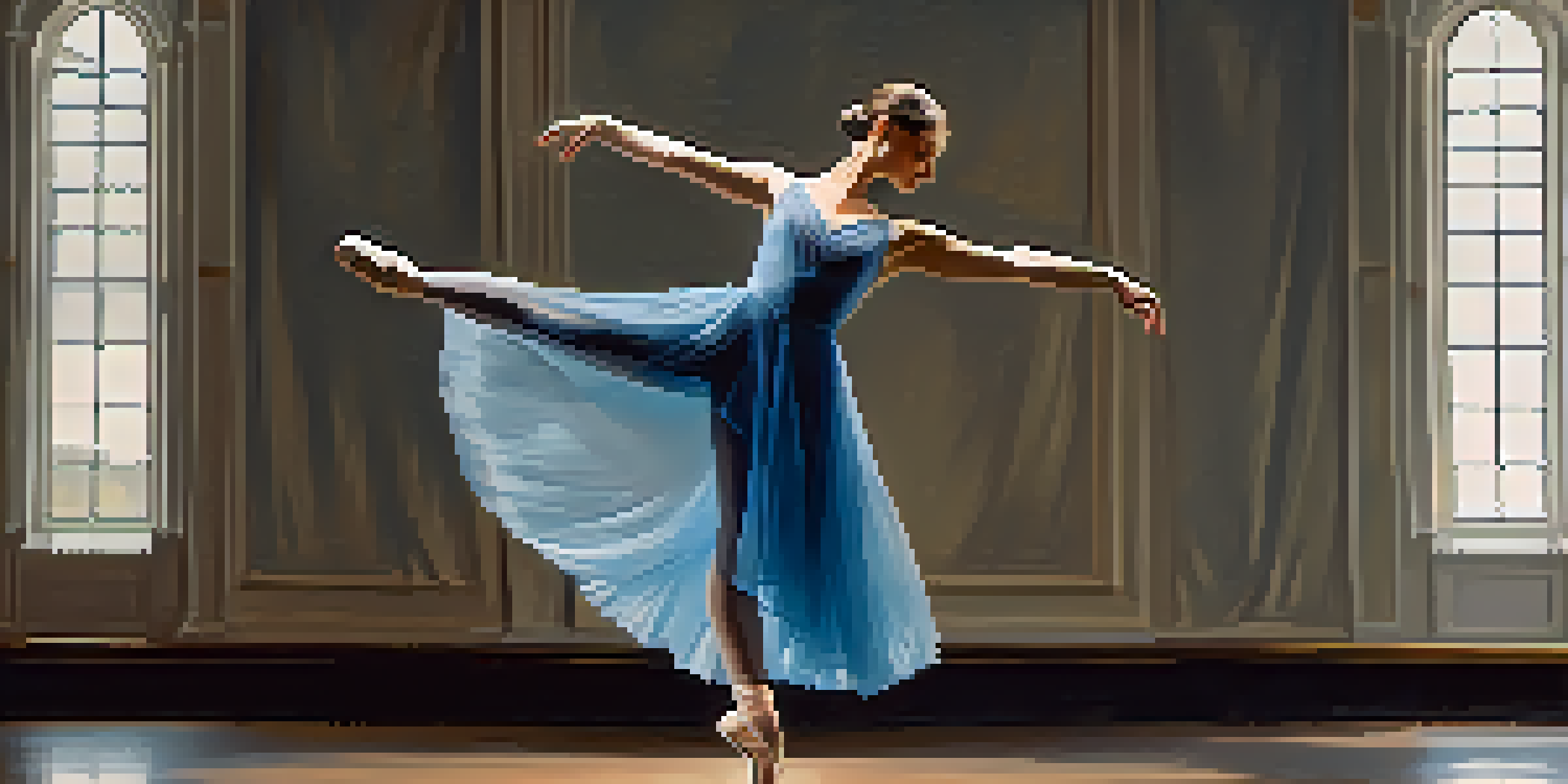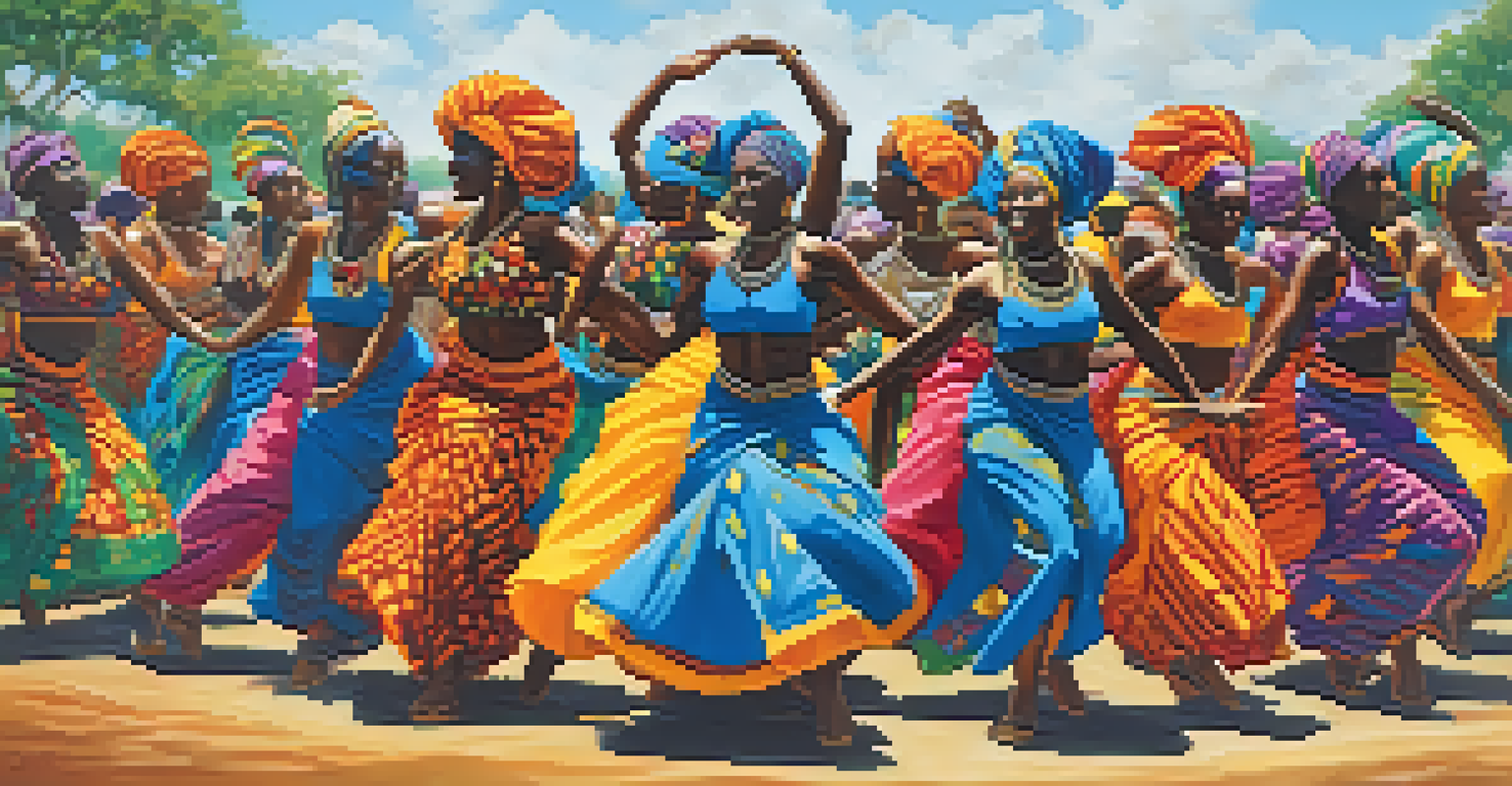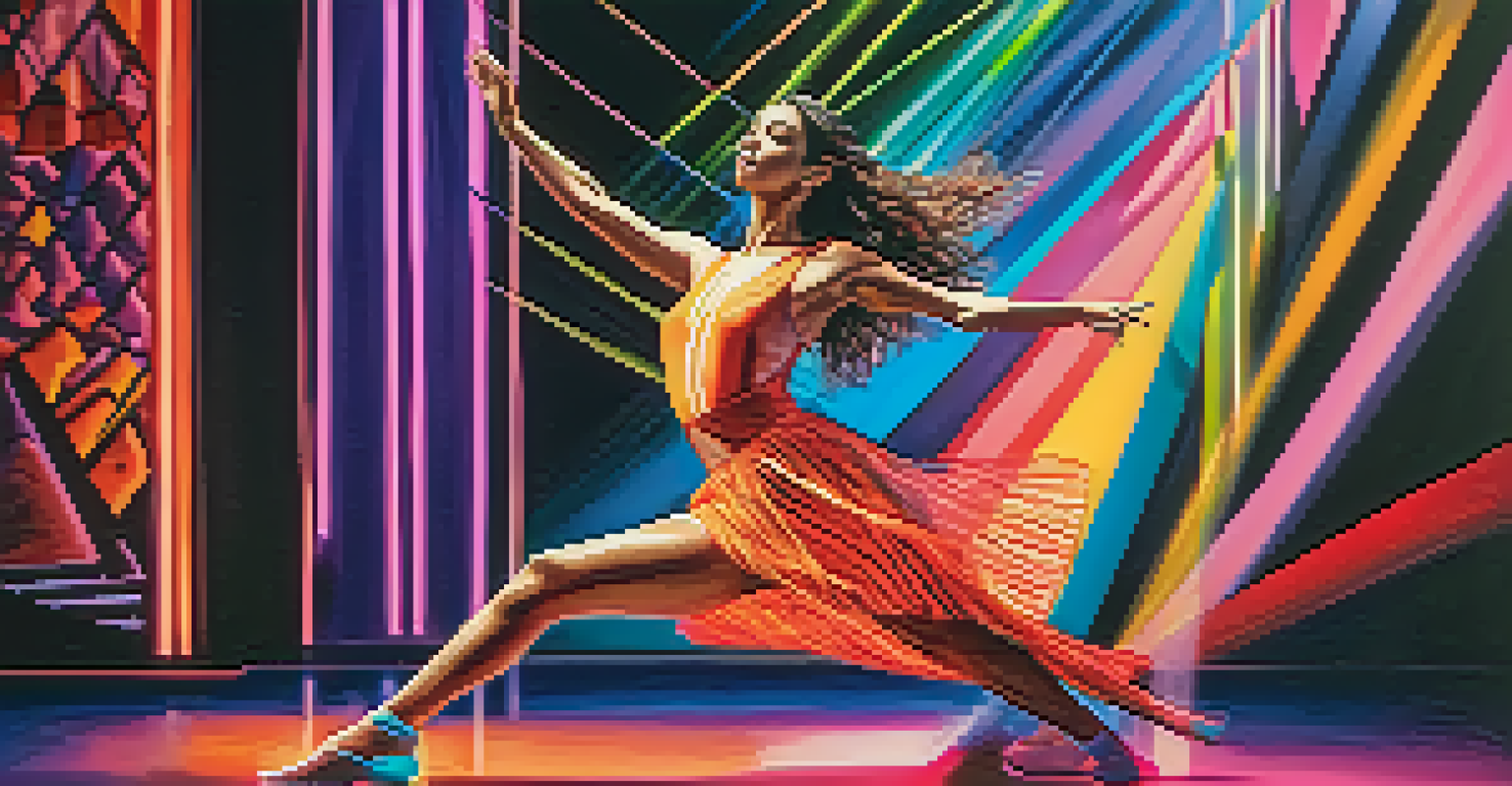The Role of Color in Dance Costumes: Impact on Performance

Understanding the Psychological Impact of Color
Colors evoke emotions and can dramatically influence how both dancers and audiences feel during a performance. For instance, warm colors like red and orange often generate feelings of excitement and passion, while cooler colors such as blue and green can convey calmness and tranquility. This psychological effect isn’t just theoretical; studies show that colors can even affect our mood and behavior in everyday life, which is crucial in the performing arts.
Color is the keyboard, the eyes are the harmonies, the soul is the piano with many strings.
When dancers wear costumes in specific colors, they not only express their character but also guide the audience's emotional response. Imagine a ballet dancer in a bright, fiery red costume during a passionate scene; the color amplifies the intensity of the performance. In contrast, a soft pastel palette might evoke a sense of nostalgia or innocence, especially in a lyrical dance.
Ultimately, the choice of color in dance costumes is a powerful tool for storytelling. By understanding how colors resonate with emotions, choreographers and costume designers can create a more immersive experience that connects deeply with the audience.
Cultural Significance of Colors in Dance Costumes
Colors carry different meanings across cultures, making their choice in dance costumes particularly significant. For example, white is often associated with purity and new beginnings in Western cultures, while in some Asian traditions, it represents mourning. Dancers can leverage these cultural connotations to enrich their performances, connecting with audiences on multiple levels.

Additionally, specific colors may be used to honor cultural heritage and traditions. A traditional African dance might feature vibrant, bold colors that represent the vibrancy of the culture, while a classical Indian dance may incorporate rich reds and golds that signify celebration and festivity. This cultural context adds layers of meaning that enhance the storytelling aspect of dance.
Colors Influence Emotions in Dance
Colors evoke specific emotions, enhancing both the dancer's performance and the audience's experience.
By being mindful of the cultural implications of color, choreographers and performers can create more authentic and resonant performances. This awareness not only respects traditions but also educates audiences, fostering a deeper appreciation for the art form.
Color and Movement: Enhancing Visual Impact
The interplay of color and movement in dance is akin to a visual symphony. Each time a dancer moves, the colors of their costume can create a dynamic visual experience. For example, a flowing blue dress may ripple like water, enhancing the fluidity of the dancer's movements. This synergy between color and motion captivates the audience, drawing their eyes to the stage.
Colors, like features, follow the changes of the emotions.
Moreover, contrasting colors can highlight specific movements or transitions. A dancer clad in a bright yellow costume against a dark backdrop will undoubtedly stand out, emphasizing their role in the piece. This use of color not only aids in visual storytelling but also helps to guide the audience's focus where it’s needed most.
In essence, color in dance costumes acts as a visual cue that enhances the overall performance. When choreographers thoughtfully select colors that complement the movements, they create a more engaging and memorable experience for the audience.
The Role of Color in Character Development
In dance, costumes often play a pivotal role in character development, with color being a key element. The choice of colors can reveal a character's personality traits or emotional state. For instance, a villain might wear dark, muted colors, while a hero could be adorned in bright, uplifting hues, instantly signaling their roles to the audience.
This visual representation through color allows dancers to embody their characters more fully. When a dancer feels aligned with their costume's color palette, it can enhance their performance and authenticity on stage. Just think of a fairy in a green costume, representing nature and magic; it helps both the dancer and the audience immerse in the fantasy.
Cultural Context Shapes Color Choices
Different cultures assign varied meanings to colors, allowing dancers to connect more deeply with their audience.
As a result, color becomes an essential aspect of character portrayal. By using color strategically, choreographers can enrich the narrative and create a more engaging experience for the audience.
The Evolution of Color in Dance Costumes
The use of color in dance costumes has evolved dramatically over the years. In the early days of ballet, for instance, costumes were often restricted to softer tones and traditional styles that adhered to strict norms. However, as dance has progressed, so too has the freedom to express oneself through bold and unconventional colors.
Modern dance, in particular, embraces vibrant colors and innovative designs that reflect the dynamism of contemporary society. For example, a performance might feature neon colors and geometric patterns, symbolizing the fast-paced, ever-changing world we live in. This shift not only represents artistic growth but also resonates with audiences who crave authenticity and creativity.
This evolution of color in dance costumes highlights the importance of adaptation in the arts. As societal norms shift, so does the palette, allowing for a richer and more diverse representation of emotions and stories in dance.
Color Coordination with Music and Themes
The relationship between color, music, and thematic elements in dance is a fascinating study. A well-coordinated color scheme can enhance the emotional impact of a performance, aligning the visual experience with the auditory one. For instance, a piece set to a lively, upbeat song might feature bright, energetic colors, while a slower, more somber melody may be paired with deeper, muted hues.
This synchronization helps create a cohesive narrative that resonates with the audience. Just as music sets the tone for a performance, colors can accentuate those tones, amplifying emotions and enhancing storytelling. When dancers wear costumes that reflect the music's mood, it creates a more immersive experience for everyone involved.
Practicality Meets Aesthetics in Design
Costume design must balance visual appeal with durability and adaptability to lighting conditions for optimal performance.
In this way, color becomes an integral part of the choreography, not just a superficial detail. By thoughtfully considering how colors interact with music and themes, choreographers can elevate their work to a new level of artistry.
The Practical Aspects of Color in Costume Design
While the aesthetic value of color in dance costumes is paramount, practical considerations also play a crucial role. The durability and washability of fabrics in specific colors can affect how a costume performs over time, especially in rigorous rehearsals and performances. Thus, choosing colors that can withstand the rigors of dance while maintaining their vibrancy is essential.
Moreover, lighting can alter how colors appear on stage. Colors that look stunning in natural light may seem different under stage lights, which can sometimes wash out or distort hues. Costume designers must account for these variations to ensure that colors remain consistent and impactful throughout a performance.

Ultimately, the practical aspects of color in costume design are just as important as their artistic elements. A well-designed costume combines both beauty and functionality, ensuring that dancers can perform at their best while looking stunning.